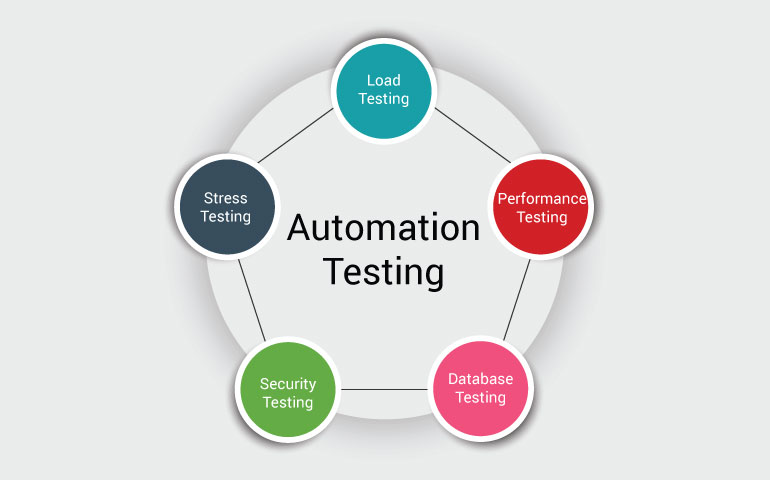Guaranteeing Success in Automation Checking: Secret Metrics, Obstacles, and Solutions Every QA Team Should Know
In the world of software top quality assurance, the landscape of automation testing is ever-evolving, requiring a precise method to ensure smooth operations. The journey to understanding automation testing is paved with subtleties that call for a keen eye for surveillance, evaluation, and constant renovation. As the market thrusts onward, the mission for ideal performance in automation screening continues to be a continuous quest, advising QA teams to equip themselves with the knowledge and approaches crucial for triumph.
Relevance of Trick Metrics
Recognizing the importance of crucial metrics is important for examining the performance and effectiveness of automation screening procedures. Trick metrics work as measurable measures that offer valuable understandings into numerous aspects of the testing procedure, such as test protection, test execution time, defect density, and examination instance efficiency. By assessing these metrics, QA groups can recognize bottlenecks, inadequacies, and areas for renovation within their automation testing structure.
One crucial facet of key metrics is their capability to track progression and keep track of the total health and wellness of the screening process (automation testing). They allow stakeholders to make enlightened decisions based on data-driven insights, which can bring about much more reliable testing methods and far better resource allowance. In addition, key metrics can assist groups set sensible objectives, measure the success of automation initiatives, and show the ROI of automation testing initiatives

Common Challenges Encountered
Obstacles frequently experienced in automation testing processes can significantly affect the total performance and efficiency of QA groups. Automation screening may not cover all facets of screening, such as usability and user experience testing, which still require hands-on treatment. Getting over these difficulties needs appropriate preparation, calculated examination situation choice, durable maintenance procedures, appropriate resources, and a clear understanding of the restrictions of automation testing.
Effective Solutions for Challenges
To resolve the barriers run into in automation testing, executing effective solutions is crucial for boosting the effectiveness and productivity of QA groups. One vital option is to buy robust training programs for QA groups to guarantee they have the required skills to effectively make use of automation devices. Training can connect knowledge spaces, boost understanding of automation structures, and enhance scripting abilities, ultimately bring about a lot more efficient examination development and implementation.
One more vital solution is to develop clear communication networks within the QA group and with other stakeholders, such as programmers and task supervisors. Effective communication aids in aligning assumptions, sharing progress updates, and immediately dealing with concerns or roadblocks that might arise during the automation screening process.

Surveillance and Evaluation Methods
Executing reliable monitoring and evaluation techniques is vital for ensuring the success and effectiveness of automation testing processes. Additionally, examining test results and metrics provides beneficial insights right into the high quality of the software program being checked and the effectiveness of the screening technique.
One key strategy in monitoring and evaluation is making use of control panels that consolidate relevant metrics and KPIs in an aesthetically available format. These control panels use an extensive review of test implementation condition, examination coverage, flaw trends, and other critical info. Regularly evaluating and analyzing these control panels can aid QA groups make educated choices, prioritize tasks, and optimize testing efforts.
Additionally, applying automated informs and notifications based on predefined limits can improve aggressive blog tracking and timely intervention. By establishing notifies for performance discrepancies or test failures, teams can address concerns without delay and stop them from rising. On the whole, surveillance and evaluation methods play an important role in guaranteeing the effectiveness and success of automation testing initiatives.
Continual Renovation Approaches
Enhancing the efficiency of automation screening procedures necessitates the consistent refinement of strategies and methodologies. Continuous enhancement techniques are pivotal for QA teams to adapt to evolving technologies and deliver high-quality software. One key strategy to improving automation testing processes is to conduct regular reviews and retrospectives. By assessing previous testing cycles, groups can determine bottlenecks, inefficiencies, and areas for enhancement. Implementing responses loopholes and including lessons learned into future testing structures can produce significant enhancements over time.

Conclusion
Finally, it is important for QA teams to website link recognize the crucial metrics, difficulties, and services in automation testing to make sure success. By thoroughly keeping track of and evaluating data, carrying out effective options to typical challenges, and continually enhancing techniques, QA teams can enhance their screening procedures and deliver high-grade software. Sticking to these methods will ultimately cause a lot more efficient and effective automation testing practices.
By examining these metrics, QA groups can determine traffic jams, ineffectiveness, and areas for improvement within their automation screening structure.
In addition, essential metrics can aid teams established practical goals, gauge the success of automation initiatives, and demonstrate the ROI of automation testing initiatives.
Obstacles commonly come across in automation screening procedures can considerably affect the total efficiency and effectiveness of QA navigate here teams. Automation testing may not cover all facets of screening, such as use and user experience testing, which still require hands-on intervention.In final thought, it is critical for QA groups to understand the key metrics, challenges, and services in automation testing to make sure success.